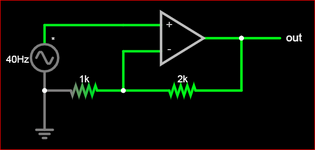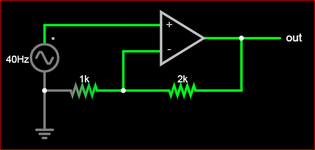pacman22
Junior Member level 1
Consider an inverting op amp with a feedback resistor connected to the inverting input from the output. How does the op amp "see" this feedback voltage when an input voltage is already being fed to the inverting terminal of the op amp?

